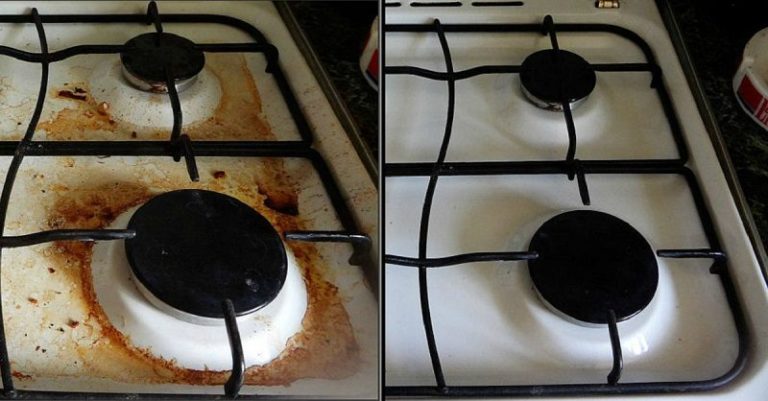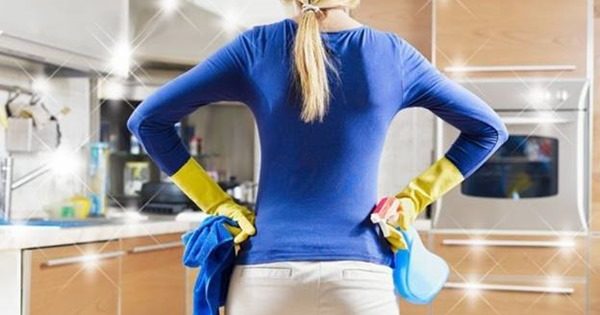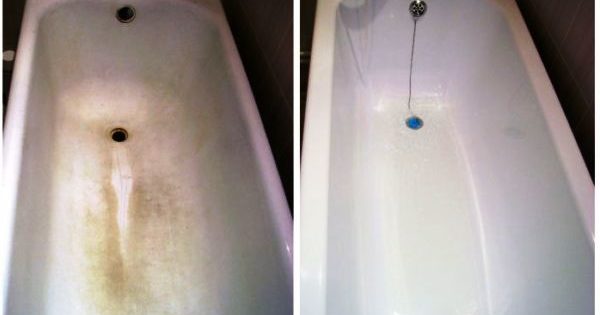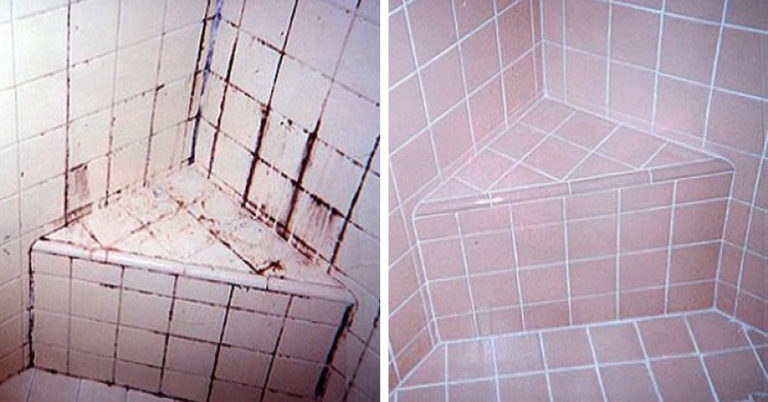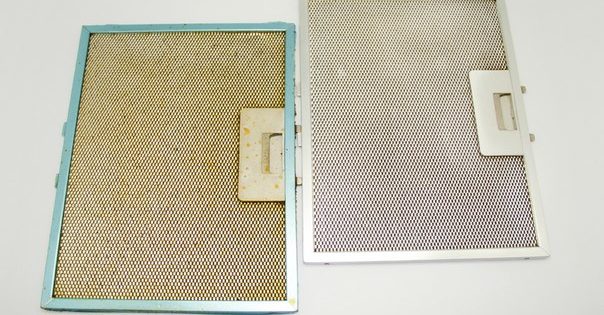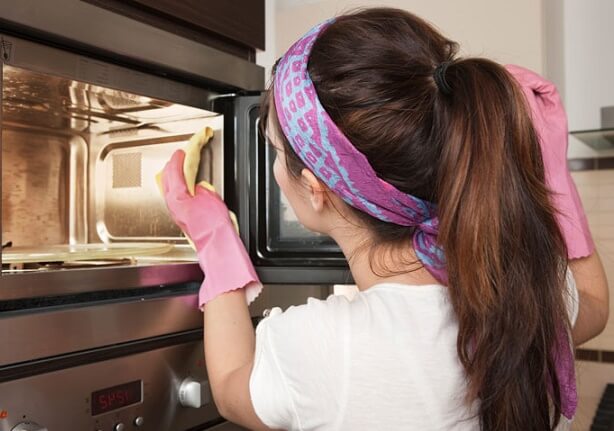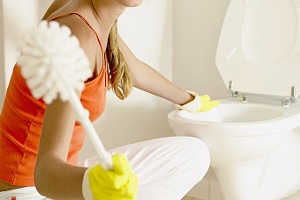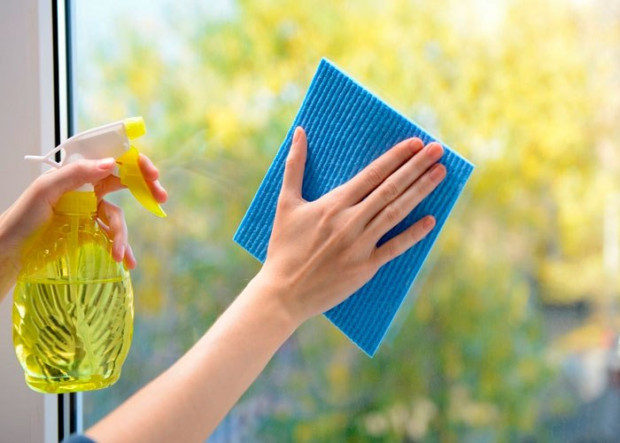20 ways to clean the oven from grease and soot at home
It’s a pleasure to cook various dishes in the oven - set the required temperature, set the timer on and went to do other things. No need to stand over the dish for hours and constantly turn over so as not to burn. All this is wonderful and wonderful, but all the charms of this method fade against the background of the upcoming cleaning of the inside of the oven. Splashes of fat, dark brown spots that have already tightly fused to the walls and a burn that appears during cooking - all these "charms", unfortunately, are inevitable. Of course, we, like all normal people, try to postpone cleaning every time under various pretexts, and in the meantime the fat accumulates and becomes invincible. We will try to help you in this difficult matter and we offer several options to choose from, how to clean the oven from fat and carbon deposits at home affordable means.
Tools that can handle simple pollution
On the Internet you can find many ways and tips for cleaning ovens, sometimes quite unexpected or too light, and in the comments under the notes you can read a lot of angry reviews that the methods are ineffective or completely useless. All this happens not because folk methods are really powerless, but because few people warn that not all of them are subject to medium and complex pollution. We decided to list the cleaning methods, indicating with what degree of soot different solutions can really cope. Let's start with funds forstruggle from light pollution.
Cleaning ferry
Absolutely any oven model or conventional oven can be cleaned with ordinary steam. Some ovens have a special recess at the bottom into which water must be poured. If not, the usual deep baking tray or heat-resistant dishes will do. Pour water, not reaching the edge of the container about 1 cm, turn on the oven to a low temperature (100-150 ° C) and let the water evaporate. After this, remove the remaining fat and soot with a damp cloth. This is best done until the inside of the oven has completely cooled. Be careful when opening the oven door, otherwise you may get burns. This method is best used immediately after cooking, when the fat does not have time to harden and still has a soft consistency. It takes a little time, but much less cleaning effort is required.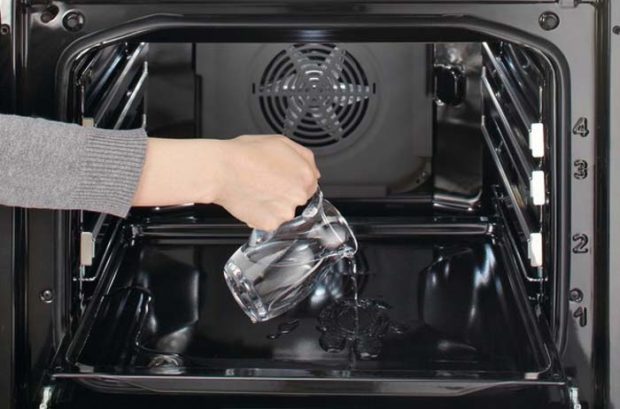
Lemon acid
Solution citric acid or lemon juice will do just fine with fresh traces of cooking. You only need a soft sponge and the solution itself. Many argue that natural lemon juice more effective than analog in powder form. To clean the entire cabinet you will have enough juice of one lemon. It will not be very convenient to apply liquid with a sponge, it can be done much faster and more efficiently using a spray gun.Spray problem areas and give acid a little time. As you know, acids effectively dissolve fat, or at least make it much milder. After a while, wipe the surface with a soft sponge. If juice remains, moisten a sponge with it. To achieve the best result, it is recommended to apply the product on the walls preheated to 50-60 ° C and rinse off after complete cooling. Be sure to use rubber gloves to protect your skin.
Acetic acid
The solution has the same properties as citric acid. acetic acid. It is necessary to mix it in equal proportions with water and perform actions similar to the previous method. Only exposure time will increase to about 2 hours.
Baking powder
Sounds, of course, unlikely, but in practice it works. In fact, a baking powder is a common soda with citric acid. When these two components interact with ordinary water, a chemical reaction occurs, accompanied by gas evolution. It is at this moment that the splitting of various contaminants occurs. To achieve the desired effect, pour the powder in the right place, distribute evenly and spray with water from the spray gun. After about 20-30 minutes, you will see that small balls of yellowish or brownish color are formed, which can be easily cleaned with a damp cloth.
Ammonia
Many successfully apply ammonia to combat drops of fat on the walls and on glass. Apply alcohol to the surface, wait 30 minutes and rinse thoroughly. We immediately warn that ammonia vapors are very harmful. With a similar procedure, the entire room is instantly filled with a pungent, pungent odor. If you still decide to use ammonia, be sure to provide good ventilation, wear rubber gloves and do not bring liquid close to your face. In addition, after cleaning, the oven must be washed until the smell completely evaporates from the walls, and it takes a long time. Otherwise, the food that you will then cook will absorb the ammonia vapors. Therefore, think carefully before using this method.
Soda
To remove dirt from glass apply gruel from it moistened soda and leave for 30-40 minutes, then wipe the surface with a sponge until the spots disappear completely.
Salt + soda
All the components of this mixture are definitely at your place - ¼ cup water + ¼ cup cookery salt + ¼ cup food soda. After thorough mixing, a pasty substance is obtained, which is applied to fresh spots and left overnight. In the morning, the mixture should be washed with soapy water and then washed with water.
Soda + hydrogen peroxide
Mix ¼ cup food soda with 3% peroxide hydrogen can easily cope with various types of pollution. Components need to be mixed continuously while mixing. The composition is applied to the spots and left for 40-60 minutes for exposure, then washed off with warm water.
We have listed the most gentle methods cleaning, which is also suitable for preventative care and does not harm the internal enamel. They will have the greatest effect if you make it a rule to use one of them immediately after cooking.
Effective methods for controlling medium pollution
If the fat on the walls has already managed to warm up and has a slightly brownish tint, it can be eliminated using similar solutions using heating up.
Citric Acid + Detergent
Pour into a deep pan or any other suitable dish. water and add 1 pack citric acid or lemon sliced with a little detergent. Place the liquid in an oven preheated to 150 ° C and let it boil for 30-40 minutes. Then turn off the oven and leave the liquid inside until the walls cool completely. Then remove the grease and soot with a sponge dipped in the same solution. You can wash dirt from warm walls, it will be even easier.Heated acid fumes can soften not too old pollution, and some can peel off in the form of a film.
Citric Acid + Cleanser
Cope with carbon deposits will help mixture citric acid (25 g) + 1 tsp dry cleaning agent + 1 tablespoon liquid detergent for dishes or any other. The consistency of the resulting paste will resemble liquid sour cream. It must be applied to heavily contaminated places with a decent layer and left to act for 20-30 minutes. In the process, the mixture may dry ahead of time. In this case, it is sprayed with water. Then wipe the surface with a sponge dampened in water with a small amount of liquid detergent.
Soda + Vinegar + Citric Acid
Another effective remedy - 25 g of citric acid + 1 tbsp. soda + 0.5 cups of vinegar. First, dry components are combined and mixed, then filled with vinegar. It is advisable to do this not in a glass, but in a large container, because a violent chemical reaction will occur. The resulting liquid must be moistened with the necessary places. After 30 minutes, rinse with soap and water, then rinse thoroughly with clean water.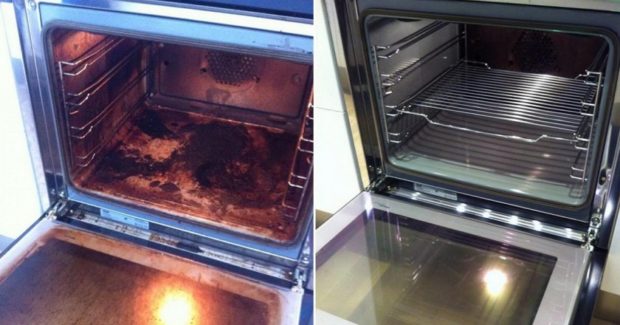
Vinegar + Soda
A similar composition, but without the use of acid - vinegar + soda. The carbon dioxide emitted when these components are mixed can eliminate moderate carbon deposits. It is very important to follow the sequence to get the right reaction. First, dampen the surface of the oven with vinegar and, without letting it dry, sprinkle soda on top. Soda is applied to the side walls on a sponge, which is simply leaned against a wet surface. After a couple of hours, you need to thoroughly rub the surface with a hard sponge, and then wash off the remnants with a soapy solution. At the end, the oven is washed well with water.
Laundry soap + vinegar + soda
To clean the carbon deposits on the walls and on the glass using a connection of 100 g vinegar with 50 g food soda and 30 g of household soap. Soap must first be grated, moved with soda and pour into vinegar. After applying the product on the spots and wash it slightly on the surface. After a few hours, the brownish layer of fat will be removed with a soft sponge.
Laundry soap
Environmentally friendly way to combat carbon deposits and fat deposits - economic soap. Grate half the bar on a fine grater, dissolve the soap chips in hot water and pour into a baking sheet or other container. Preheat the oven to 180 ° C and place a container of liquid on the lower shelf. After 40 minutes, turn off the heat and allow the oven to cool completely when closed. You will see that under the influence of the vapors of such a solution, the greasy coating will become porous and will lag behind the walls and will be easily removed with a soft sponge. We repeat again - a layer of fat and soot will be removed, which has not yet adhered tightly to the walls and does not have a black-brown color. After cleaning, the oven must be ventilated, alkaline soap fumes have a characteristic odor.
Salt
Salt can also help in the fight against burnt fat. To do this, sprinkle the spots with coarse salt and pour an even layer on the baking sheet. Place it in and turn on the oven to heat. When the salt turns brown, the oven must be turned off. To prevent salt from sticking to the pan, periodically mix it with a wooden spatula. After cooling completely, wash the surfaces thoroughly with soapy and then clean water.
Caustic Soda + Salt
Another effective remedy - 1 tbsp drinking soda + 1 tablespoon table salt + 1 tablespoon caustic soda. The resulting slurry is applied to the surface, left for 15-20 minutes, and then washed off with a solution of vinegar and water in a ratio of 1: 1. If the stains are not completely removed, rub them with the same paste until they disappear completely.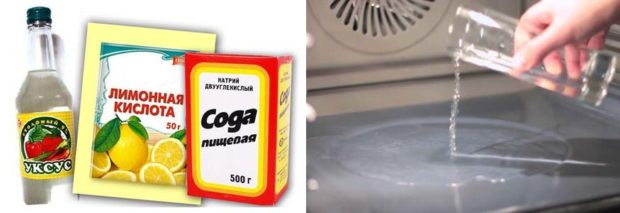
There is a chance that the action will need repeat several times or combine several different ways and make some effort.
Long-term pollution control
If the above methods were powerless, it means that your oven has undergone serious pollution, which only the following methods or their combination can cope with.
Acetic acid (concentrated)
Acetic acid - A very caustic and potent remedy, which you need to work with in personal protective equipment. In a deep pan pour 1 liter of water with the addition of 2-3 tbsp. false 70% acetic acid. Place the container in an oven preheated to 150 ° C for 30 minutes. If the grease stains have been steamed, remove them with a soapy solution, and then wash them well with clean water. In no case do not open the oven door during heating, otherwise you can get a thermal burn or inhale hot vinegar fumes.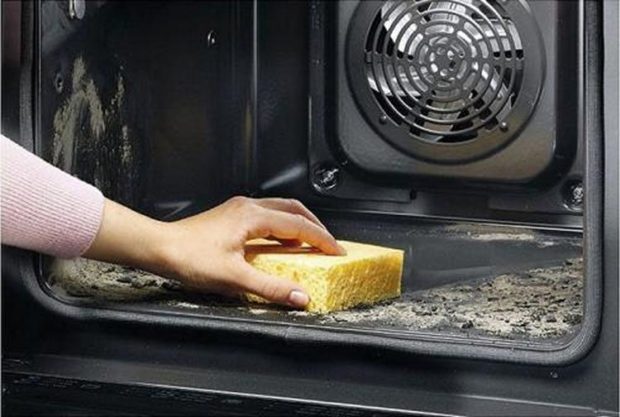
Salt + acetic acid
The effect of salt on pollution will be stronger if you add a little acetic acid. Dissolve 500 g of sodium chloride in 300 ml of warm water. After cooling, add 1-2 tbsp. tablespoons of acetic acid. Pour the finished mixture onto a pallet and place on the lower shelf of the oven, heated to 150-200 ° C. The liquid should boil for 30 minutes. When the walls of the oven become barely warm, wash them with soapy water.
Mechanical way
Mechanical way It consists in combining one of the above methods with the use of a special scraper, which is recommended for smooth glass-ceramic surfaces, but is also great for cleaning the oven. Explicit advantage before abrasive sponges is the absence of scratches and scratches on the surface after application of force. The scraper can also be used to clean the glass door. If the cabinet design allows, remove the glass before using any method. This will greatly simplify the task.
Household chemicals
Well, the most extreme way is to use household chemicals. Surely every housewife is armed with a tool that will definitely help. Of course, folk remedies have obvious advantages - they are safer for health due to the lack of strong chemicals. Just imagine what should be in the composition of a detergent that can break down even very old fat for a short time. Danger application also lies in the fact that if there are scratches on the inner surface of the oven, particles of the product may not be washed out completely. And with subsequent heating, pairs of harmful substances will interact with food. That is why, cleaning should be carried out at the initial stages of the appearance of pollution, so as not to resort to such radical measures.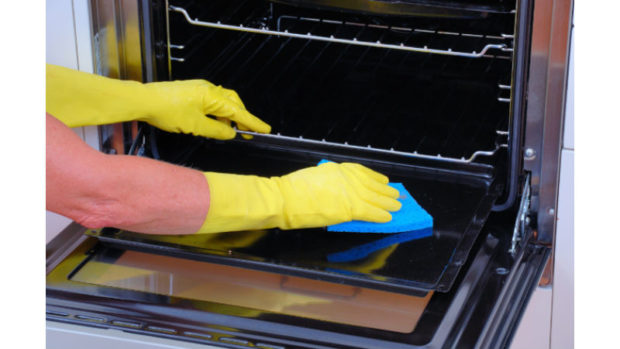
Eliminate odor after cleaning
Very often, even after thoroughly and repeatedly rinsing the inside of the oven, a characteristic smell of the detergent composition may be felt. What to do in this case:
- Depending on the degree of caustic smell, leave the oven door open for several hours or all night;
- Dissolve in a small amount of water tablets of activated carbon in an amount of 10-15 pieces and heat the oven with a solution inside. Coal absorbs an unpleasant odor;

- Wipe the walls of the oven with water and lemon juice;
- Cut a large onion in half and wipe the internal cavity with a fresh cut. Onion juice will kill the smell of detergent, and then quickly evaporate.
And finally. As always, the rule that states that the best care is prevention. And, no matter what method of dealing with fat and soot you choose for yourself, in any case, never apply the product on heating elements and a fan. Otherwise, you will never get rid of its smell. You can only wash the grill, guides, baking sheets, the door and the walls themselves.


